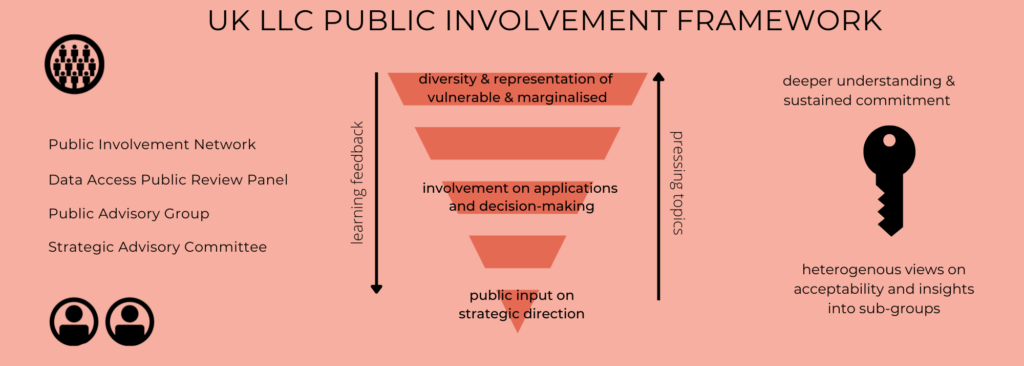News
Read the latest news, blogs and reports from the UK LLC and across the longitudinal population data community.
Blog
Involving the public in our work
By Kirsteen Campbell, Communications and Engagement Officer
10th Jan 2023

An important part of my role at UK Longitudinal Linkage Collaboration (UK LLC) is to make sure that members of the public are involved across our whole programme of work.
As my first task at UK LLC was to set up our communications, the formal Public Involvement programme wouldn’t be set up until later. However, much of our safeguards and system design decisions were strongly influenced by extensive public involvement. This work was previously undertaken by data managers who were part of the ‘Vanguard’ group – the first studies working together on building UK LLC. The experience from this public involvement work contributed to our design.
To start involving members of the public in the development of our public-facing materials in advance of our formal programme, we asked Health Data Research UK (HDR UK) if they could help. They run a successful involvement programme and work closely with many of our team as part of the National Core Studies initiative.
The public involvement team at HDR UK provided us with a route to offer the public contributors who were part of their programme an opportunity to provide input on materials such as the Participant Notification Sheet, privacy notice and our introductory animation. This support was invaluable in enabling us to include public views at a time when we had limited capacity.
When the time was right to set up our own Public Involvement programme we consulted with others working in health data who were doing this already. This included longitudinal population studies, some of which are UK LLC partner studies. Many of our partner studies have members of the public on their Data Access Committees and Public Advisory Groups. We were interested to find out what worked well for them, the processes they had in place, how they measured the impact of the involvement and how they communicated that impact back to their public contributors.
Following these discussions, our team worked to create UK LLC’s public involvement programme. We produced a framework that offered different ways for people to get involved – from reviewing data access applications to co-developing public-facing materials to providing public perspectives and input on our future.

We wanted to attract a wide range of people who would bring with them a range of experience of public involvement work. We promoted the roles on our social channels and through volunteering websites. As we were keen to have study participants represented within our programme, we also asked our partner studies to promote the opportunity to get involved. We were clear that people who were interested in being part of our programme didn’t need any previous experience. Being engaged with what we were doing was the most important factor.
We stay connected with partner study teams who manage their own public involvement activity. As they hold the relationship with their study participants, we can learn from their experience, and share with them anything we learn from our own endeavours.
One of the most rewarding aspects for me over this last year has been getting to know everyone. We’re fortunate to have a diverse group of people and it’s been humbling to hear people’s stories and motivations for getting involved.
The people who volunteer their data collected through longitudinal population studies very much want it to be used to help improve health and wellbeing and contribute to better public health policies.
My hope is that our public involvement programme provides us with a way to hold both challenging and supportive conversations around the acceptability of using data for public benefit research. And to find new ways to help the public shape how we operate and hold us accountable on our commitment to enable public benefit research.